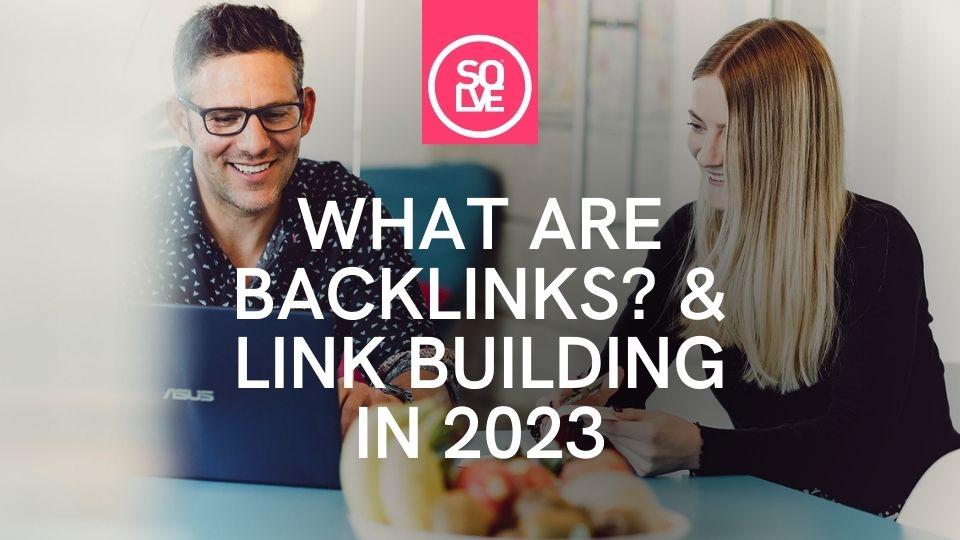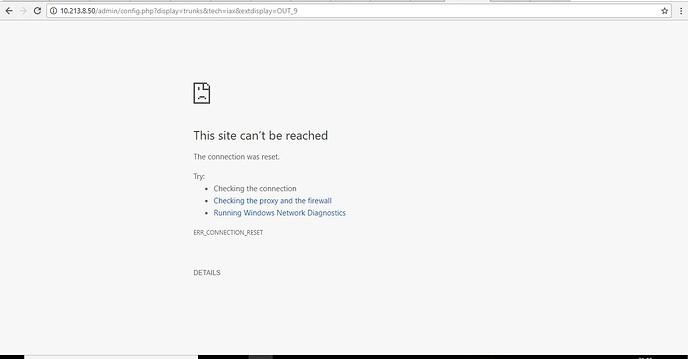
What are backlinks?
Backlinks are hyperlinks from one website or webpage to a page on another website. Search engines view backlinks as trust points for web pages. They may also be referred to as “inbound links, “incoming links” or “one-way links. By linking to another website, you essentially say it’s a good and reliable resource. Otherwise, you would be unlikely to link to it, just like you would be unlikely to opt for a product on Amazon with poor reviews.

Backlink Guide
Why Backlinks are Important for SEO
Backlinks are one of the most important things in determining how trusted your webpage is and affects how you rank in search engine results. Having links and positive signals from the rest of the internet sends positive signals to Google that real people love your website. In return, Google promotes your site as it knows you are relevant, trustworthy, and authoritative.
What Types of Backlinks are Valuable?
Backlinks are beneficial for your business because they can drive traffic, increase brand awareness and also increase rankings.
Backlinks can be built up naturally. For example, if you write a killer blog post that provides value to your industry or if you release an innovative new product that takes the market by storm – you’ll probably get a lot of people talking about your product or valuable content, and as a result, lots of articles made by other publishers which include backlinks to your page.
Authoritative Websites
Can reference either the ‘authority’ of an entire website or just a specific web page.
In this case, web page authority refers to Google’s original Pagerank algorithm (PageRank works by counting the number and quality of links to a page to determine a rough estimate of how important the website is), this supports the idea that a page with more backlinks leading to it, has more ‘reviews’ or ‘votes’ for it.
While Google has reported that a sitewide domain (website) authority metric does not exist, it does, however, seem logical that a backlink to a premium domain is going to rank better than a backlink to a domain. For example, the website for England’s rugby team will most likely rank higher than your local school rugby team’s website made on the weekends by the coach that also has a full-time job.
Given the guidance, you may assume that you should reject all low-authority domain backlinks. However, when thinking strategically, it can be useful to think of these web pages as seedlings – there lies the opportunity to grow together over time into a forest of trees, climbing to the top of Google’s search results.
You should take into account a website’s Domain Rating when considering what websites you would consider writing content for, aiming to receive rewards in return for your efforts.

Anchor Text Includes Your Target Keyword
Within a quality backlink, you’ll usually want to aim for 3-4 target keywords in the anchor text to achieve a high rank for that webpage in search engines like google. This will help to improve organic search traffic. This strategy incorporates one primary keyword and two to three secondary keywords.
You can use Google Search Console to do keyword research and discover what queries your webpage is currently ranking for in the SERPs (search engine results page) to help you decide on the best keywords to target
The final and most important step is ensuring that you generate the perfect balance of anchor text ratio to avoid being penalised by search engines due to over-optimisation.
It’s best to avoid using the exact match of keywords for every backlink, instead, try using keywords mixed in or you can opt to use branded, natural, or URL – for example, these links contain no keywords but instead contain your brand name, a relative phrase or simply the URL as it appears in the search bar.
As a rule of thumb from SEO experts, the use of keywords within anchor text can be broken down into the following ratios for both your homepage and your inner pages:
Homepage backlink Ratio
- Branded, natural, or URL – 80-95%
- Keywords mixed with other words – Up to 10%
- Exact match keywords – Up to 5%
SubPage Keyword Backlink Ratio
- Branded, natural, and URL – 35-45%
- Keywords mixed with other words – 50-60%
- Exact match keywords – Up to 10%
The key is to monitor these keywords as you are building your backlinks, and how they are being utilized on other web pages. As keywords may change around a lot, especially if you are link-building on a large scale – this is just another way to ensure you are staying within the ratio guidelines, to avoid that troublesome penalty from Google.

The Website You’re Linking From Is Topically In Line With Your Site
It goes without saying that backlinks to your site must be topically in line with your site. Being linked to another webpage that is completely unrelated to your content is going to put you on Google’s naughty list (aka beyond page 2 of the search results) – and nobody wants that!
Take some time to research websites that showcases similar content to your own, as these are going to be the most valuable. Think of it like genres of music – it wouldn’t make sense or flow well if a screamo artist teamed up with a classical artist in most cases.
The backlink is a ‘Do-Follow’
While nofollowed backlinks don’t usually influence the linked page’s rankings, they are capable of doing so. Nofollow links do not pass authority onto the site they are linking to.
In general, Nofollow links are not used to link out to sites. They are mainly used for advertising. If someone’s paying you or you are using affiliate links, these are generally Nofollow links.
When you decide who you want to link to for example because it’s reputable or you’re citing a source. It’s best practice to make these links Do-follow (Even if you are linking to a competitor!) Do-follow links tell Google that you are ‘recommending’ these sites, so they have the potential to rank higher.
Sites with more Nofollow links won’t necessarily rank lower while sites with more Dofollow links won’t necessarily rank higher. Keep in mind that Google wants to reward earned links rather than paid links.
Not all backlinks are created equal! One high-quality backlink can be more powerful than hundreds of other low-quality backlinks.
Unsurprisingly, high-quality links often share the same characteristics:
- Derive from authoritative websites/domains
- The target keyword is in the link’s anchor text
- The website and webpage backlinking to you are topically related to your website
The backlink is from a New Domain
While it seems obvious to presume that linking from an older domain (or a more established website) is going to be the best choice, it’s not necessarily that black and white.
Linking with a new domain, in the long run, could grow to gain high authority so there lies an opportunity to grow with them.
How to get good backlinks?
Creating linkable assets
Our number one rule is to create content that is worth linking to. This ensures that your backlink-building strategy has a solid foundation.
A linkable asset refers to a piece of content that is likely to aid you in acquiring backlinks. Characteristics of a winning linkable asset include:
- Non-promotional – audience-focused content
- In-Depth – long-form assets of 1000+ words
- Useful – provides users with value they can put into practice
- Top-of-funnel – designed for a wide range of audiences
- Evergreen – content that speaks to current events
These are usually done on a weekly or monthly basis and involve curating lists of the best content within your industry or the industry you are creating backlinks for. You can reach out and be placed on other people’s link roundups too.
Build Backlinks through Link Roundups
Let’s break it down into steps:
- Use Twitter or Google to type in whatever ‘keyword’ you are using + ‘link roundup’
- Create a spreadsheet with the following headings to make a list of your favourite blogs:
- URL
- First Name
- DA – Domain Authority (this can be found using one of the linked SEO tools below)
- Notes – on the correspondence/relationship with that blog
- You can also add a section for ‘Status’ to note if the relationship is ‘Active’, ‘Complete’, ‘Working’, or ‘Rejected’.

- Contact
Reach out to the best blogs by sending personalised emails. By taking that bit of extra time to personalise each individual blog, it’s going to help increase your conversion rates.
- Keep Track & Keep in Touch
It’s important to keep a record of the numbers and set goals so you can measure the impact of link roundups. For example, how many links would you ideally like to acquire each month? How have link roundups impacted your organic traffic?
Once you have established a relationship with a blog, make sure you keep in touch regularly. Show interest in helping them out – in most cases, what goes around comes around and they’re likely to help you out in future! Everybody wins.
Find links to outdated resources
Similar to finding broken links, we can find blogs with links to outdated resources and contact the page owners and ask them to replace these with links to your site which gives their readers current and fresh information that is valuable. In most cases, the page owners will be willing to do this to improve their own search engine optimisation. We call this the win-win scenario!
Broken Link Building
This tactic looks to find broken links on blogs that are relevant to your content and reach out to these blogs to replace the broken links with ones to your website. This works on the assumption that blogs will want to replace the broken links rather than send their readers to a dead resource. We can break it down into a four-step process:
- Find relevant web pages with broken backlinks
For this, you will need access to an SEO tool (refer to our list at the bottom of this blog) Even if you find broken backlinks manually, you’ll need to use a backlink checker to find out how many links they have.
Make sure to
- Check your competitors’ broken pages with backlinks
- Check for broken pages about a topic
- Check for broken links on competitor’s websites
- Check for broken links on resource pages
- Check the prospective links
While the obvious option is to replace a dead webpage with backlinks to a similar piece of content, this may not always be the best option. This is for two reasons:
- It’s important to understand why someone linked to the broken page in order to create a replacement page – by taking this into account, you can ensure that the content you are creating and the blogs you are reaching out to are relevant to each other. This will guarantee higher success rates
- Consider if the broken webpage has any good backlinks – this will determine if it’s worth creating a replacement page
- Create a replacement page
Now that you have uncovered the reason why someone has linked to a dead webpage – you’re ready to create some valuable content to replace it!
- Outreach
Contact the owners of the blogs with broken links and declare to them enthusiastically why your page deserves to be featured! This can either be done as a personalised, individual email approach or one blanket email.

Guest Posting
Offering to write a piece of valuable content for another webpage in exchange for a link to your website is another ‘you scratch my back, I’ll scratch yours’ way to get backlinks. In this case, you are providing a lot of value to the other person and it can be time-consuming. That’s why it’s worth taking into consideration their domain authority when deciding on the length of content you are going to write for them.
First, you’ll need to find websites that allow guest posting. Here’s how it’s done:
- By searching Google
- By searching relevant websites
- By following other guest bloggers
- By pitching blogs via email
Placement varies, you can choose to place the link in the main body of the article or in the author bio at the end. Then you have the option of whether to make it a Do-follow or a No-follow link as we previously discussed.
By building relationships with bloggers, you may be invited to write content again in the future for them or they may offer useful feedback to improve your writing. Writing for well-established, popular blogs is a great way to showcase your writing to a wider audience, and in turn, should result in more visitors to your website who are in search of more valuable content relevant to what you have written.
The more credible the site, the more the link to you will be seen as a vote of confidence by Google which will increase your credibility on links to other sites too!
Providing Infographics
Infographics and other visual assets can be an effective strategy to build links. Particularly if an infographic is well-designed and helps to articulate your point in a blog. So it can be a worthwhile investment for your business to have an infographic designed professionally.
Submit Testimonials
Testimonial link building is a surefire way to land authoritative links from the homepages of your favourite products and services. While again requiring a time investment, you’ve probably gathered by now that proper backlink building does take time.
Here are five steps to submitting testimonials:
- Collate a list of products and services within your industry that align with what you offer.
- Find the contact info for each product/service
- Send emails pitching your testimonial offers
- Write up the testimonials
- Optional – drive it home with an accompanying video
Testimonials are gold dust to anyone who sells anything. It can put potential buyers at ease, hearing how positive someone else’s experience was, therefore companies are going to be pretty stoked with the possibility of a testimonial. In exchange, you get a link from their site to yours. If this is a popular product or service already, you are pretty much on your way to increasing your traffic or if you help the product or service to grow with your fabulous testimonial – you’ll see long-term results which can be equally exciting.
Just a last note on testimonials – we strongly advise being truthful and only writing testimonials for products and services you are really passionate about.
Blogger Reviews
A powerful SEO strategy is asking relevant influencers/bloggers to review your products or services and post these reviews on their blogs. With influencer marketing being one of the most popular ways to market now, it’s proven to work.
As always, there are some guidelines to follow to make sure you are making the most of your time:
- Opt for the middle-of-the-road bloggers (you’re unlikely to hear back from the ‘A-listers’
- Engage with the blogger you would like to collaborate with
- Build a relationship with the blogs you want to work with
- Offer something in exchange (e.g a free product or service)
- Don’t continually spam them with emails
- Keep it friendly and professional (when corresponding)
Link Reclamations
A relatively new term and link-building strategy. If you monitor and keep an eye on your backlinks, you may notice some have been lost through spammy link building, 404 errors, or PageRank decay. This is a good thing to check for regularly to avoid being penalised by the algorithm gods for poor-quality backlinks.
If a user clicks on a backlink to your site and they land on a 404 error page they’re most likely going to abandon their session meaning you’ve lost the value of that backlink.
Reclaiming links from a high-quality website within your own niche, which have a trusted backlink profile of its own, is a smart move to have as part of your SEO strategy.
Link Reclamation Checklist:
- Identify old links to your site that no longer work properly
- Determine the quality of the backlink – you’ll likely need an SEO tool to do this
- Decide if it’s worthwhile pursuing
- Reach out to the host of the site where your original link is
- Request they fix the link

Citations
Citations are considered a ranking factor for local SEO, as it helps search engines to recognise you as a legitimate business and improve local rankings. Having full citations listed on trusted websites shows Google that there’s more certainty you exist. This improves local rankings, online visibility and assists in driving more traffic to your site.
A citation will directly mention your business name, address, and phone number. It’s best to ensure the citation is in full rather than a partial citation, as these won’t be as advantageous for SEO. It also should be in a certain order – name, address, then phone number.
Competitor Backlinks
Want to make sure you’re outperforming your competitors to reach climb higher toward that precious top spot on search results?
Competitor backlinking is an effective strategy that involves analysing the backlinks of your competitor’s websites to gain a comprehensive understanding of the types of backlinks you need including quantity and quality.
It’s recommended to look into both domain-level and page-level competitors, you can do so by following these steps:
- Identify your main keywords
- Identify your main competitors
- Analyze domain-level competitors using a backlink-checking tool (check out our list at the bottom of the blog)
Backlink Best Practices
Having links and positive signals from the rest of the internet sends positive signals to Google that real people love what you do. In return, Google promotes your site as it thinks you are relevant, trustworthy, and authoritative.
To start building backlinks, you will need a personalised link-building strategy for your business.
Link-building strategies will most often fall into the following categories:
- Add – manually add backlinks to websites
- Ask – Send out an email to ask to be backlinked on their website
- Buy – Paying for backlinks
- Earn – Building organic links from people who have visited your site (usually because of an innovative product or service or a valuable piece of content
It’s important to note that not all link-building strategies are created equal. As we have talked about, Google and other search engines reward organic backlinks currently, or backlinks that you have ‘earned’. Backlinks that have been bought or are not relevant, are unfortunately just not going to cut it!
Avoid Building Links Indiscriminately
Temptation lies with SEO newbies to build as many links as possible, without giving much thought to which types of links you build or how you build them – trust us, we’ve tried many backlink strategies but the best way to win the race is slow and steady.
Before you get started with building up your backlinks, make sure you:
- Establish a clear strategy of what you are trying to accomplish
- Consider which links will help you the most
It’s more beneficial to build a smaller number of extremely helpful links than a large number of backlinks that may actually harm your website in the long run.

Embed Your backlinks In Good Content
Good content is the most valuable part of your website, it’s like placing a plate of warm, freshly baked cookies out for your guests.
Posting a long URL in a blog comments section doesn’t look attractive and it doesn’t provide value, much like that stale old broken biscuit at the bottom of the jar that no one really wants to touch.
A link that is embedded as a citation to a resourceful page or a well-written article (aka the warm cookies) is much more effective, so it’s best to prioritise the content that surrounds your link.
Favour High-DA Sites Over Low-DA Sites
Google takes into consideration the quality of the domains that link to your site as well as the number of links. Domain Authority is a relative measure of how trustworthy a website is, therefore the higher the DA, the more authority Google awards to its backlinks.
There are tools listed at the bottom of this article that you can use to check out the authority of multiple domains.
As a general rule, you should favour high DA sites where you can as they naturally bring in more traffic, meaning there’s a higher chance they will send that traffic your way.
Given the guidance, you may assume that you should reject all low-authority domain backlinks. However, when thinking strategically, it can be useful to think of these web pages as seedlings – there lies the opportunity to grow together over time into a forest of trees, climbing to the top of Google’s search results
Hot Tip! Favour high DA websites when deciding what websites you would consider guest blogging and writing content for.
Favour New Domains Over Already-Linked Domains
From a ranking perspective, it’s best to spend your precious time finding new domains to link to, even if the DA is lower than a site you are already linked to.
The first link to a high-domain website will pass considerable authority to your site but the second link to the same high-domain website will pass significantly less authority.
For example, a backlink from a site you haven’t linked to before with a DA of 65 is going to perform better than a secondary backlink from a site with a DA of 83.
This is not to disregard secondary backlinks from domains you are already linked to, as they are still going to contribute to an increase in eyes on your brand and a potential increase in referral traffic.
The more unique domain links you can get, the better. If you have two links from the same domain it won’t gain as much authority, so it’s better to look for new links from new domains.
Link to a High-Quality Page Onsite
When adding backlinks to your website, they can link to the following:
- Homepage
- Linkable Assets
- The web pages you want to rank high on Google/other search engines
The webpages that are best to backlink to are in most cases the pages that provide value, rather than sales pages such as eCommerce. Therefore making the sales pages the hardest to rank.
Fear not – for not all is lost! You can create a funnel to your sales pages by setting up internal links from your backlinked pages to your sales pages (and you can do this multiple times). Think of your potential customers as Hansel and Gretel and your links funnel as a little breadcrumb trail to your products or services.
Your link could serve as additional reading material on a certain topic or infographics or it can stand as a citation to support reported facts. Additionally, the inclusion of humour, analogy, or content in line with what your readers are looking for the answers to are ways to provide value.
Finding a pain point or solving a reader’s problem is where you will find those little nuggets of gold that will perform best as backlinks.
Make Sure Your Content is Relevant
This one is probably the most straightforward. Say you are writing a blog about baking healthy muffins, are going to backlink to a site about health and fitness or a site about electric cars? If you opted for the site about health and fitness – ding, ding! You are correct. Google is going to reward this by ranking you higher because the backlink is relevant to the blog topic as it results in more reliable sources for readers.

Place Your backlink Early in The Article
The location or placement of the backlink is key as it influences its visibility and performance. Generally, surfers of the web will be most likely to click on the main content block rather than the header or footer, as the content block is where the value lies for the reader.
To put it simply, placing your link early on or closer to the top of the article is going to improve reader visibility as they are going to notice it as soon as they land on the webpage. Visitors often read the introduction so this is a more effective place to have your link vs the end of the article. Think of books you’ve started reading and perhaps not finished – you’re 99% more likely to read from the start – unless you’re the 1%!
Google uses the ‘reasonable surfer model’ to determine how likely a webpage is to be clicked on. The estimated CTR or ‘ click-through rate’ has an influence on how high a website or webpage might rank.
Never Include More Than One backlink to Your Site in an Article
Google themselves cautions against using too many internal links as it can lead to problems. Google’s John Mueller says,
“It’s like this one giant mass of pages for this website, and they’re all interlinked, we can’t figure out which one is the most important one. We can’t figure out which one of these are related to each other. And in a case like that, having all of those internal links, that’s not really doing your site that much.
So regardless of what PageRank, and authority, and passing things like that, you’re essentially not providing a clear structure of the website. And that makes it harder for search engines to understand the context of the individual pages within your website. So that’s the way that I would look at it there.”
So while it’s neither good nor bad to include necessarily, it’s best to keep things clean and streamlined by sticking to one link to your site per article.
Include Descriptive Anchor Text
Anchor text is a clickable piece of text that contains a link (aka a hyperlink) to another website or webpage. It usually appears blue and underlined and typically describes what the linked webpage is about.
Back in the Flinstone age of SEO, the primary strategy was to opt for anchor text that incorporated an exact match of target keywords and phrases.
Due to the saturation of Google’s search results and ever-evolving updates, overuse of exact match keywords in anchor text can actually harm your site.
The best practice, until the Google gods decide otherwise, is to use text that adequately describes what it is linking to.

Avoid Keyword Stuffing In Your Anchor Text
Google and other search engines use this anchor text alongside the keywords to better determine how the webpage should be ranked.
While it may seem like a shortcut or a ‘hack’ to ranking higher in search engine results, we don’t recommend trying to force keywords into anchor text as this increases your chances of being penalised by Google.
You can always come up with a phrase that is similar to your target keywords but priority should lie in using anchor text that makes sense and flows well within the content.
Don’t Write Off The Possibility of No-Follow Link Building
No-follow links won’t build your domain authority directly as they won’t be taken into account by Google’s web crawlers and the search algorithm won’t take them into account when determining rankings and making DA calculations.
Often, high domain authority publishers purposefully include mostly no-follow links to maintain their ‘teacher’s pet’ reputation with search engines.
No-follow links may be disregarded or viewed as unimportant but as you may have gathered by now, not all is as it seems in the fickle world of building backlinks.
Here’s the positive – no-follow backlinks help to increase brand visibility and can be viewed as an opportunity to make a positive impression on a high-authority publisher and could lead to gaining a do-follow link.
Don’t Get Fixated on Link Building Quantity
Arguing against many backlinks from many different publishers is a hard debate to sell, as they will increase your domain authority and your rankings.
Even so, search engines will also look at the quality of the linked external websites.
Google rolls out regular updates aimed at filtering out websites that didn’t deserve rank due to poor links. To gain high organic traffic, the importance lies in the quality of your backlinks.
While at one point, oodles of backlinks were thoroughly recommended, so link builders would upload to distribution sites.
Naturally, this was abused which led to regular updates from Google to filter out low-quality or ‘spammy’ backlinks in order to distinguish the sites providing the highest value.
What are the best Tools for Backlinks?
There are many useful tools that can help you by checking your backlinks and making sure they are optimal. While most tools are paid for, there are some free tools available. Here’s just a handful of them:
SE Ranking
Feature-Rich SEO Platform For Agencies And Webmasters.
Sitechecker
Get a detailed SEO audit report with a personalized checklist on how to improve your website and get to the top of Google.
RankActive
Accomplishes SEO tasks effortlessly with all the needed features in one tool.
Ahrefs
All in one SEO toolset.
Coupler.io
Coupler.io automatically syncs information between apps to create live dashboards and reports, transform and manipulate values, collect and back up insights in one place, and more.
OpenLinkProfiler
A free backlink checker service.
RankSignals
Offers targeted services to increase your traffic, leads & sales.
BuzzSumo
Assesses time period, social media, advanced operators, content type, domain, and author.
Monitor Backlinks
Check the good and bad backlinks for you and the competition.
Mention
Mention enables brands and agencies to monitor the web, listen to their audience and manage social media.
Semrush
Grow organic traffic with complete and easy SEO tools & workflow. Uncover millions of national & local keywords, analyze any domain’s backlink profile, run technical SEO audits track your SERP positions daily.
How to Deal with Toxic/bad Backlinks
Backlinks from low domain authority or spammy websites may not only harm your rank but also lead to being penalised by Google & other search engines.
Mirrored pages and page layouts can impact backlink quality. Mirrored pages are similar pages on multiple sites linking to the same anchor text, search engines may view this as a link-building scheme otherwise known as Black Hat link-building.
If a page has a high ratio of HTML to visible text, a backlinked page may be seen as poor quality.
You may receive messages from Google about “unnatural links”, you are being penalized whether you are aware of the toxic links or not. Luckily, not all is lost – there are multiple ways to eradicate toxic backlinks:
- Contact the administrator of the website you are linked to and ask them to remove the link.
- Request a review from Google – Google reviews around 20,000 reconsideration requests a month of the 400,000 manual penalties enforced. However, this can take up to 30 days to be processed.
- Use a tool to have the links removed – if the backlinks are not of importance, another option is to use a tool such as Disavow Links.

How to do Competitive Research for Backlinks
There’s always a chance you may have missed out on an unexpected competitor even if you are up to scratch on your keyword competitors.
- Identify your competitors
- Figure out their strengths and weaknesses
- Check out how your keywords compare
- Identify your keyword opportunities
- Report on your findings
How to Check your Backlink quality?
There are multiple sites that offer effective backlink-checking tools. However, most of these are paid-for services. These tools allow you to take advantage of your backlinks and help you to build relationships with the higher-quality websites that link to your site.
These backlink checkers can provide you with valuable data that can be used to create a long-term strategy to build more high-quality backlinks.
The Benefits of Backlinks
Increased Traffic to Your Website From Referral Sites
Being backlinked to a website that receives a high number of visits will result in your link being seen (a lot!). Curiosity creeps in for the reader, they click your shiny blue hyperlink, and bam – they’ve landed on your webpage. Driving more traffic to your website in this way has the potential to increase your leads and sales.
Giving a good Signal of Quality to Search Engines
If you have many backlinks to quality content on your site, it’s going to have a positive impact on your site allowing you to achieve higher rankings on search engine results.
Earning backlinks from those well-established sites that are optimised and ranking high themselves, is like earning a good review for your restaurant from a highly respected food critic. Search engines are going to value the opinion of a professional vs a new or low-authority site.

They are Endorsements for Your Website
Search engines view a backlink to your website as an endorsement for your website DA. In other words, another site is vouching for you – which helps to rank you higher.
It’s saying “Hey, look Google – I think this website is super trustworthy, relevant to my content, and could be really helpful to others as it has helped me”.
If that site has a high DA, then you’re winning as search engines will trust it more, therefore trusting their endorsement of your site.
Trust and Authority for Your Business or Brand
The more people see your business name, the more they will begin to build trust in your brand. Quality backlink building as part of your SEO strategy is going to going to assist you in gaining high authority for your domain, therefore building trust with search engines as well as potential customers for your products or services.
Featured on Authoritative Websites
The importance of having an online presence as a brand is more important than ever and we’re not just talking about having a beautiful logo, a cohesive colour palette, and some fabulous fonts. Creating valuable content that educates your reader can help to demonstrate your company’s knowledge and expertise, resulting in more trust from your audience and authority within your niche. This will in turn help to increase your referral traffic.
Build Online Relationships Between Websites
Backlinking to other websites and blogs within the same industry can help you to connect with and build relationships with crucial influencers in the same field. The more interaction you have, the more you build trust which could lead to opportunities for PR outreach with journalists or content writers.
Think of it as an ongoing, giant online networking event!
Promotion for Your Business
Quality backlinks are like little clickable internet business cards scattered around for people to find. They act as promotions for your business, getting you seen and inviting people to visit your site.
How do we use Backlinks?
Backlinks can be time-consuming to build and requires highly skilled individuals to achieve high-quality backlinks, not to mention the high-value content needed to gain quality backlinks. If you would rather be focussing on the parts of your business that you are best at or enjoy the most, Solve is here to help.
It’s no small feat to take on the project of monitoring your backlinks and creating a strategy to build more. If you need help creating an effective backlink strategy for your business, Solve is here to help. With a dedicated team of backlink specialists and decades of experience, you can count on Solve to assist you in improving your search engine rankings by building only the best backlinks.

Our final thoughts on Backlinks
If you’ve made it to the end of this article – I applaud you, and I hope you found it useful or educational! Backlinks are a powerful tool when used correctly and there is a diverse range of building strategies. However, it’s imperative to be aware of all the intricacies and best practices to avoid being penalised by search engines.
Ultimately, if you have great content, provide great value and give the visitor an amazing experience. You should be on the path to Google enlightenment and getting links naturally.
If you’re looking to optimise and improve your online visibility with backlinks our team of experts will work with you to identify the most relevant and valuable backlinks for your website and strategically place them to maximize their effectiveness.






